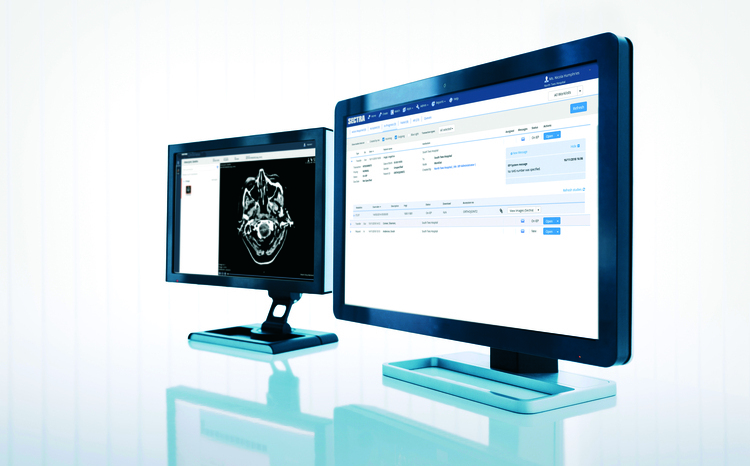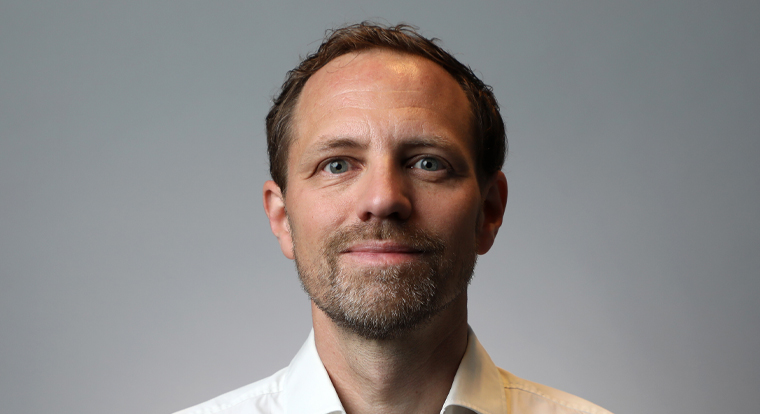Mayday sees PACS benefits
- 23 April 2007
Joe Fernandez
 Picture Archiving and Communications Systems (PACS) have been one of the clinical successes of the NHS IT programme, with the system now introduced in acute trusts across London and the South of England.
Picture Archiving and Communications Systems (PACS) have been one of the clinical successes of the NHS IT programme, with the system now introduced in acute trusts across London and the South of England.
Mayday Healthcare NHS Trust was one of the first trusts in England to receive a new PACS system under the National Programme for IT in BT’s London cluster.
E-Health Insider met up with Dr Tony Newman-Sanders, a consultant radiologist at the trust and one of the national clinical leads for PACS to see how Mayday, as mature implementation, has benefited from PACS.
An end to film
The Philips PACS system went live in the trust in September 2005, Dr Newman-Sanders is effusive about the benefits that the system has already bought to the trust. Demonstrating the system in action in his office at the Mayday University Hospital he enthused: “Look at this – no complex imaging, just simple on-screen imaging, with the ability to multitask and identify medical issues – who wouldn’t want this technological advance, it’s certainly easier than staring at different wallcharts and processing films – hoping for the best and with digital dictation we can now work from our office!”
A key objective was to get rid of wet film as soon as possible: “Prior to, during and after go-live, I spoke with senior clinicians across the trust who would be using the system to ensure that it met their high expectations. For me, it was important that we get the trust filmless from day one," Dr Newman-Sanders was keen to stress.
He said that close working with the trust’s suppliers was vital: “I worked hard with my colleagues from the PACS programme board, representatives from the local service provider BT, and the PACS supplier Philips to ensure that it would meet their needs and staff knew how to use the system and manipulate images with it.”
The road to PACS at Mayday
It’s been a long road though to get to being able to call up digital x-rays on demand, share them with colleagues and easily annotate. The trust had been keen to install PACS as part of the South West London PACS Consortium.
Dr Newman-Sanders was Mayday’s champion for PACS in the consortium and following an initial deployment in another hospital, the Mayday trust had been ready to introduce it at the end of 2003.
A lot of work had been done to prepare the hospital for a new system before the NHS announced the National Programme for IT in 2003 – including £45,000 invested to ensure Digital Imaging and Communications in Medicine (DICOM) compatibility of modalities.
Once the trust learned that PACS would be included in NPfIT, it waited and applied to be an early adopter site, and in September 2005, Mayday became the second trust in London to get the Philips system from BT. Crucially the system was integrated with both the trust’s existing iSoft Radiology Information System and patient administration system.
Ensuring clinician engagement
Dr Newman-Sanders was appointed as senior responsible owner for the deployment and ensured that the project involved as much senior clinical engagement as possible.
He showed EHI how simple the system was to use and explained that it is not necessarily radiologists who needed to be convinced. For them it was ‘preaching to the converted’, but other staff may need to adapt more to the new ways of working – especially the senior consultants who have always used film. As PACS is so ‘intuitive and user friendly, however, this has proved to be relatively easy at Mayday.
Dr Newman-Sanders added the PACS deployment went smoothly because he made sure that the clinical engagement was there from the point of being accepted as an early adopter until the go-live itself.
“We created a project intention document at the point of being accepted and made it a focus to ensure there was adequate stakeholder awareness in the forms of presentations to groups of staff, e-mails, leaflets, newsletters and local press cuttings. It was almost spooky that once we were film-free there seemed to be no staff resistance to it.”
Realising the benefits of PACS
Once the system was in full use trust-wide, a benefits realisation exercise began. Dr Newman-Sanders outlined the numerous benefits of digital imaging as he prepared for a benefits analysis session with the trust’s board later that afternoon.
“There are huge financial benefits, no more film processing costs, the use of digital dictation and voice recognition means no transcription fees, soon we will merge that to electronic notifications to GPs. The time spent on complex imaging from film has gone with the clinician able to see more than one image from different body parts at one time," he said.
“We are also able to see a patient’s previous imaging history from previous appointments using the RIS, avoiding any repetition or errors based on their history and ensuring the patients safety. With film, at least 90% of images expired after between a year or two, we now have a lasting image.”
He added: “The biggest challenges and benefits are yet to come, as we learn more about people’s workflows and needs but by embracing this technology we can produce accurate images immediately and help to reduce the waiting time target for scans to six weeks in line with DH targets.”
Lessons learned
Offering advice to other trusts awaiting PACS, Dr Newman-Sanders said trusts needed to realise these benefits and not just see it as an IT project but instead one that would re-engineer the way they deliver care.
To demonstrate the point he showed us how easy it was to view multiple scans for one patient at any time and zoom into specific areas that may need further examination. As he clicked through the system, he emphasised how essential it was to get clinical buy in from the outset.
“With PACS, you have to understand the size and complexity of the system. It’s not just a new toy for radiologists and other clinicians, it is a technological advance that will change the way screenings are performed. In my opinion, it is fundamental that a trust has clinical engagement throughout to ensure this realisation.”
BT’s clinical lead for PACS, Chris Whitton, said that, with London now working towards becoming fully filmless, more trusts were the benefits from PACS.
“Our two early implementers have really showcased the benefits of the PACS systems for all trusts to take note of. Radiologists seem to want to embrace the technology and it’s fair to say that what we see now in trusts once systems are deployed, a lot of staff already know how to use the system.
Next steps on PACS
“The use of PACS around the hospitals and remotely is also growing. Some staff are using the system remotely on wireless networks, others are using it for home tele-radiology access through a secure Virtual Private Network, and most recently we have seen Chelsea and Westminster let patients see their images on their bedside entertainment system.”
Links




